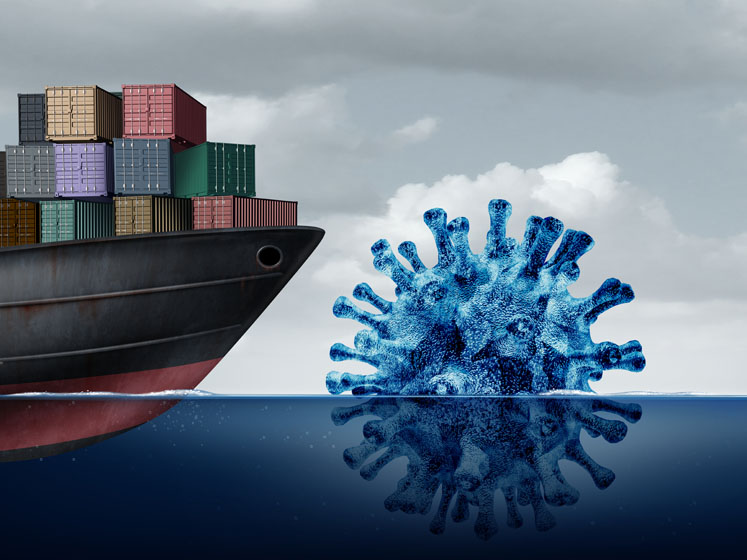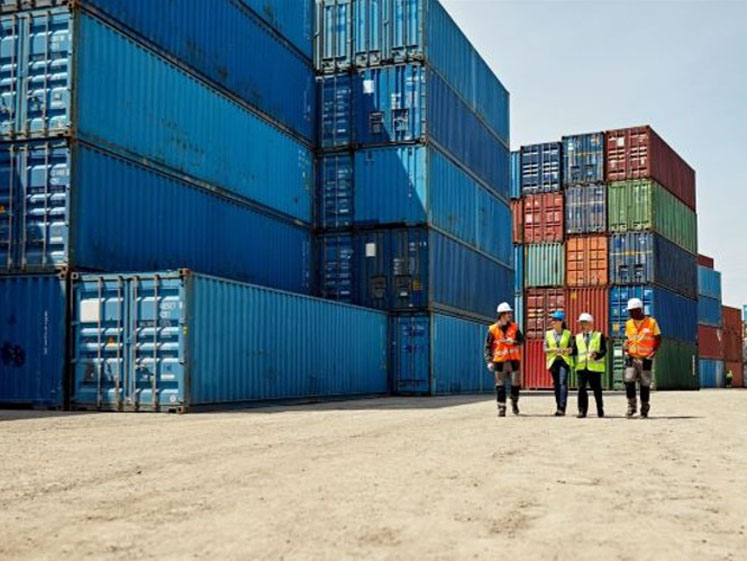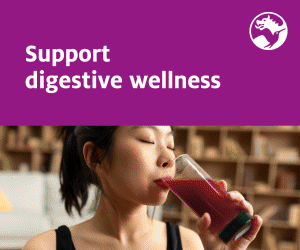And it’s not just producers that are feeling the strain. Rattled by the uncertainty of the pandemic, consumers are prioritising factors such as immunity and respiratory health and adopting a more holistic approach to well-being that centres on the mind as much as the body. As a result, shoppers are proactively seeking solutions that support their unique health goals — driving even higher demand.
The nutraceutical industry rode the first waves of the pandemic relatively well, with sales of dietary supplements in the US almost doubling by April 2020.1 As the crisis persisted, sales showed no signs of slowing, with the sector reaching a staggering value of $167.49 billion by the end of 2021.2
As manufacturers face skyrocketing demand amid a fresh wave of supply challenges, we explore how recent events have affected the global supply chain and why building resilience should be front of mind when moving forward.
COVID reveals gaps in the chain
The unprecedented economic shockwaves from the outbreak of COVID-19 exposed critical weak points in the global supply chain. For decades, most businesses — from retail through to pharmaceuticals — relied on the “just-in-time” operation model. This prioritises stable workflows, single-supplier sourcing, close collaboration and low levels of inventory to optimise return on investment (ROI).3
In the early months of 2020, this careful balancing act was thrown into chaos. The reliable flow of cargo ships — first from China and then virtually every other region — ground to a halt, impacting the 80% of global trade that is conducted by sea.
Normally routine shipping activities became a lottery, with departure dates and arrival times becoming completely unpredictable. Air freight didn’t fare much better as the total cessation of passenger flights reduced available cargo space by 90%, causing rates for the few available shipments to skyrocket.
Ironically, with millions of consumers stranded at home and governments trying to build stocks of testing kits, face masks and personal protective equipment, demand for shipped products was at an all-time high — even though global trade capacity fell through the floor. When COVID-19 restrictions finally began to ease towards the second half of 2021, the issue shifted from too few ships to way too many, with floating gridlocks further slowing deliveries.2
Owing to their status as “essential” suppliers, nutraceutical manufacturers were largely allowed to continue production throughout the pandemic. Although this helped to shield the sector from the devastating losses experienced in other markets, the need for continuity meant that brands had to navigate the tumultuous conditions affecting the shipping and logistics markets.

Delays in raw material harvesting also made ingredients harder to source, let alone ship to the processing location in one region and on again to distribution centres in another. Add to this the fact that manufacturers often rely on one supplier — particularly for specialty ingredients or botanicals that only grow in specific climates — and the cracks soon began to show in the global supply chain.
To keep essential deliveries flowing, nutraceutical brands took inspiration from the strategies adopted by their colleagues in the pharmaceutical industry who were already factoring months of delays into their sourcing strategies. For example, materials that would typically be ordered 30–40 days in advance to meet demand in Q4 were now being commissioned as early as April and May; that’s how unpredictable the supply of raw ingredients was!
Piling on the pressure
Just as the global distribution system adapted to the post-COVID landscape, serious geopolitical issues have emerged to add further strain to already stretched supply chains. A key example is Russia’s invasion of Ukraine. Wheat products were hit first and hardest, but Ukraine is also the world’s primary producer of sunflower oil, a vital commodity widely used in processed foods as a healthier alternative to traditional oils.4
It’s not only this year’s harvest that has been affected because of the conflict, but planting for next year too, meaning that there will be ramifications further down the line. Less well reported, but more significant from the nutraceutical industry’s perspective, is the impact on botanical ingredients such as rhodiola (Rhodiola rosea) and eleuthero (Eleutherococcus senticosus), both of which are sourced from within Russia.
This highlights the wide-ranging effects that localised issues can have, affecting not only the immediate ingredient production cycle but also the health of the supply chain for months or even years to come.
The climate conundrum
Looking beyond these imminent challenges, climate change poses the greatest threat to the security of the nutraceutical supply chain.2 To understand the potential cliff-edge the industry could face in just a few decades, we need only look at the current state of ashwagandha sourcing.
This adaptogen has rapidly grown in popularity as a functional inclusion, with proponents hailing it as a solution to reduce stress, support memory and promote muscle recovery, among other benefits. Grown in India, ashwagandha is highly susceptible to sudden changes in climate, such as too much rainfall in typically arid growing regions.
Companies that rely on this ingredient consequently have a huge incentive to reduce their environmental impact and keep growing conditions stable. Leading brands have already started acting on this responsibility — adopting strategies to reduce emissions and promote environmentally responsible farming practices among their suppliers.

A similar story applies to many other raw materials used in nutraceutical products, including turmeric; its cultivation has been severely impacted by recent droughts, floods and hurricanes in India.5 With inconsistent supplies of genuine raw materials comes the increased risk of adulteration.
When stocks run low, unscrupulous suppliers bulk out small amounts of their active ingredients to meet orders or may substitute them with other ingredients. Synthetic sources may be labelled incorrectly as all-natural ingredients, an issue that’s especially serious in the turmeric supply chain.
Rigorous product and batch testing, supplier auditing and an industry wide commitment to furthering supply chain transparency is therefore key to ensuring a sustainable supply of genuine ingredients … as well as consumer safety.
Building resilience
The triple threats posed by the pandemic, a volatile geopolitical environment and climate change have brought the need for greater supply chain resilience into sharp focus — but have also cleared the way for real transformation. A critical first step to constructing a more robust sourcing strategy is anticipating and mitigating the impact of potential vulnerabilities.
For example, nutraceutical manufacturers such as New Chapter are proactively investing in sustainability initiatives throughout the supply chain to future-proof their sources of raw materials such as elderberry extract, plant-based calcium, omega-3 fish oil and turmeric.6 Adapting new strategies, such as localisation of supply or expanded storage capacity, can also help to alleviate pressure during unexpected events.
Ultimately, the most important change that brands can make to improve their resilience to market volatility is building a network of suppliers. Even before the pandemic, brands were beginning to recognise the inherent vulnerability of relying on a single sourcing partner, especially when this supplier is based overseas.
A multisupplier strategy is not without its own risks, however, as companies that depend on global contract manufacturers, and the logistics thereof, found when the COVID-19 epidemic became a pandemic.
That being said, the benefits of cultivating a varied network of partners — both long-established and freshly founded — far outweighs the potential risks. From bolstering consumer trust with improved traceability to specialised sustainability strategies, or finding innovative solutions to emerging challenges, harnessing the combined power of multiple partners is fast becoming the most effective option for nutraceutical manufacturers.
Rebuilding better
Brands are understandably eager to leave behind the uncertainty of the pandemic, but the supply chain vulnerabilities it exposed cannot be easily dismissed. The current crisis in Ukraine and looming threat of climate change are already poised to test systems once again.
Armed with their experiences of the last 2 years, however, companies are not powerless to mitigate the effects of these or other challenges yet to come. By carefully reviewing their current sourcing infrastructure, investigating the stability, transparency and available capacity of prospective suppliers, and building a robust network of trusted sources, nutraceutical producers can ensure that they’re ready to meet demand, whatever pressures the future may bring.
References
- R. Lordan, “Dietary Supplements and Nutraceuticals Market Growth During the Coronavirus Pandemic: Implications for Consumers and Regulatory Oversight,” PharmaNutrition 18 (2021): 100282.
- https://store.newhope.com/products/2021-global-supplement-business-report (page 2).
- www.cips.org/knowledge/procurement-topics-and-skills/operations-management/just-in-time/.
- https://insights.figlobal.com/supply-chain-management/war-ukraine-forces-brands-reformulate-there-may-be-no-other-option.
- www.cbi.eu/market-information/natural-ingredients-health-products/turmeric/market-potential.
- www.newchapter.com/wellness-blog/sustainability/sustainable-sourcing/.




